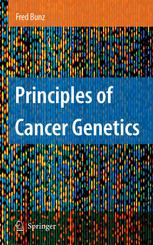

Most ebook files are in PDF format, so you can easily read them using various software such as Foxit Reader or directly on the Google Chrome browser.
Some ebook files are released by publishers in other formats such as .awz, .mobi, .epub, .fb2, etc. You may need to install specific software to read these formats on mobile/PC, such as Calibre.
Please read the tutorial at this link: https://ebookbell.com/faq
We offer FREE conversion to the popular formats you request; however, this may take some time. Therefore, right after payment, please email us, and we will try to provide the service as quickly as possible.
For some exceptional file formats or broken links (if any), please refrain from opening any disputes. Instead, email us first, and we will try to assist within a maximum of 6 hours.
EbookBell Team

4.8
64 reviewsCancer genetics is a field of daunting breadth and depth. The literature describes hundreds of genes and genetic alterations that are variably associated with again as many disease states and risk factors. Integrating these disparate pieces of highly specialized information is challenging for the professional scientist and student alike. Prinicples of Cancer Genetics consolidates the main concepts of the cancer gene theory, and provides a framework for understanding the genetic basis of cancer.
Focused on the most highly representative genes that underlie the most common cancers, Principles of Cancer Genetics is aimed at advanced undergraduates who have completed introductory courses in genetics, biology and biochemistry, medical students, and house medical house staff preparing for board examinations. Primary attention is devoted to the origins of cancer genes and the application of evolutionary theory to explain why the cell clones that harbor cancer genes tend to expand. The many points of controversy in cancer research are avoided, in favor of firmly established concepts. This book does not delve into tumor pathobiology beyond what is required to understand the role of genetic alterations in neoplastic growth. For students with a general interest in cancer, this book will provide a highly accessible overview. For students contemplating future study in the fields of oncology or cancer research, this book will be useful as a primer.